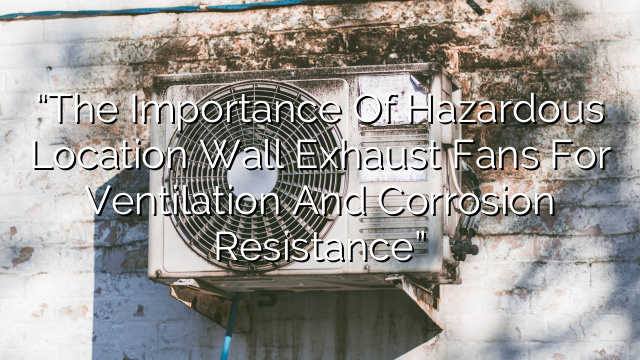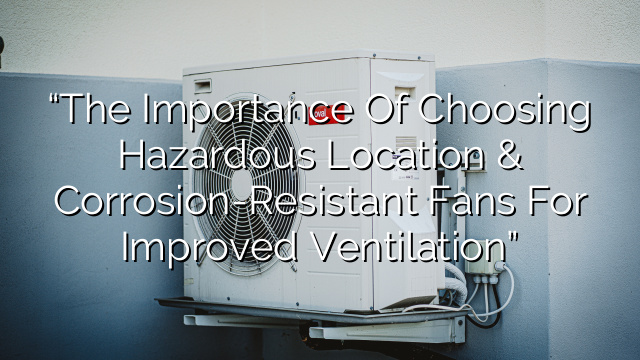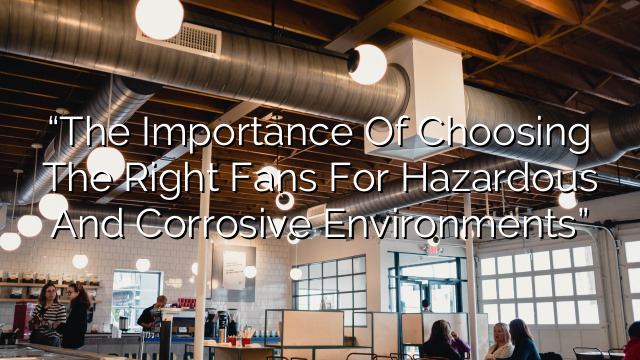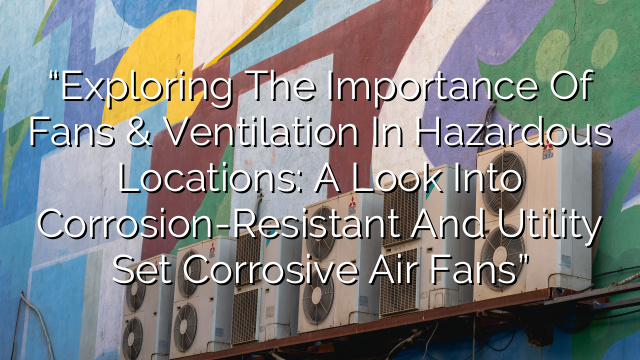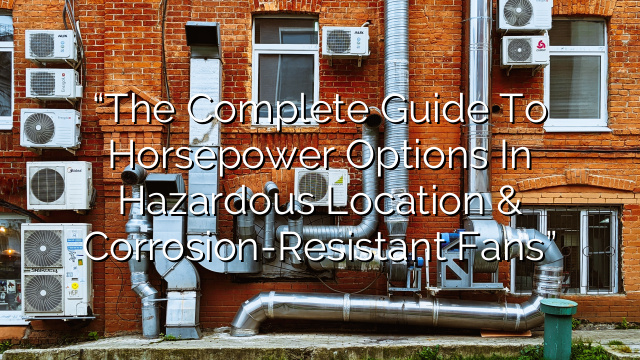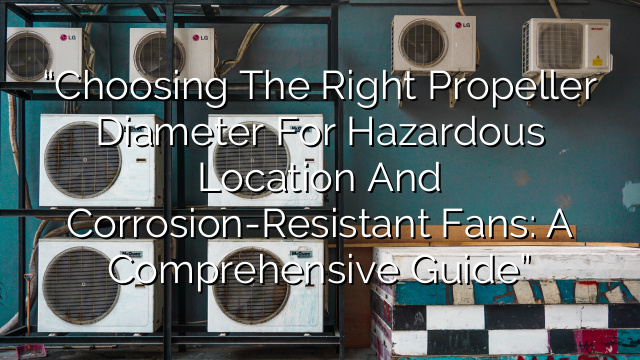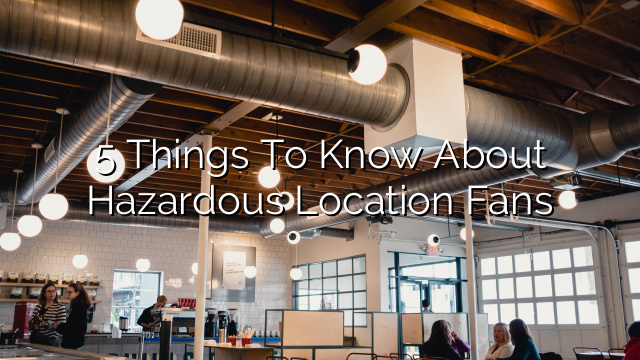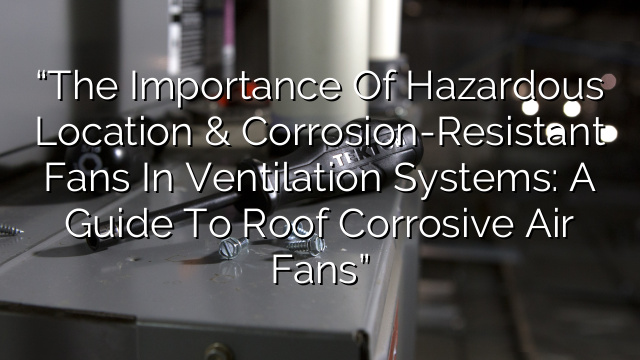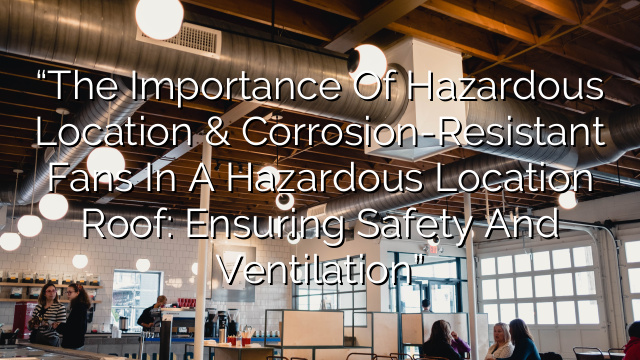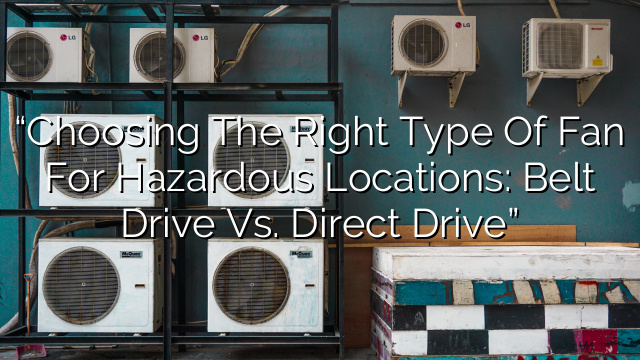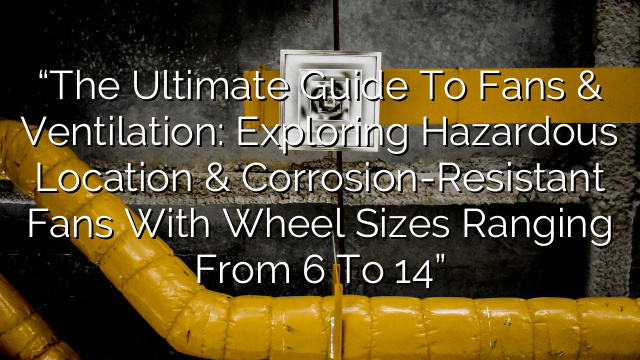Ventilation is a critical aspect of any industrial or commercial facility that deals with hazardous materials or processes. Proper ventilation not only ensures the safety of workers and the environment but also helps maintain the efficiency and longevity of equipment.
One crucial component of an effective ventilation system is hazardous location wall exhaust fans. These fans are specially designed to operate in environments where explosive, flammable, or corrosive gases, vapors, or dusts are present – also known as hazardous locations.
What are Hazardous Location Wall Exhaust Fans?
Hazardous location wall exhaust fans are industrial-grade ventilation fans that are built to withstand harsh conditions found in hazardous locations. These fans are typically found in industries such as chemical processing, petroleum refining, paint booths, and pharmaceutical manufacturing, where the release of hazardous materials is a possibility.
Unlike standard wall exhaust fans, hazardous location wall exhaust fans have features that allow them to operate safely in potentially explosive or corrosive environments. These fans are designed to meet rigorous safety and performance standards set by organizations such as the National Fire Protection Association (NFPA) and the Occupational Safety and Health Administration (OSHA).
The Importance of Ventilation in Hazardous Locations
Ventilation plays a critical role in managing the risks associated with hazardous materials and processes. In an enclosed space where hazardous substances are present, the release of gases, vapors, or dusts can quickly accumulate and reach dangerous levels, creating a potentially explosive atmosphere.
Hazardous location wall exhaust fans help maintain a safe working environment by continuously removing harmful gases, vapors, or dusts from the air. By providing adequate airflow, these fans help control the concentration of hazardous substances and minimize the risks associated with their presence.
Corrosion Resistance in Hazardous Location Wall Exhaust Fans
In addition to the potential for explosions and fires in hazardous locations, corrosive gases or vapors can also be present. These corrosive substances can rapidly deteriorate and damage standard ventilation equipment, compromising its performance and lifespan.
Hazardous location wall exhaust fans are built with materials that are resistant to corrosion and degradation from exposure to corrosive substances. These fans are typically constructed using stainless steel or other corrosion-resistant alloys to ensure durability and longevity in harsh environments.
Key Features of Hazardous Location Wall Exhaust Fans
Hazardous location wall exhaust fans offer several key features that make them suitable for use in hazardous locations:
- Explosion-Proof Motors: These fans are equipped with motors that are specially designed to prevent sparks or arcs that could ignite flammable substances.
- Corrosion-Resistant Construction: These fans are made from materials that can withstand exposure to corrosive substances, ensuring long-lasting performance.
- Sealed Electrical Components: The electrical components in hazardous location wall exhaust fans are protected and sealed to prevent the entry of hazardous substances.
- Compliance with Safety Standards: These fans are designed and tested to meet or exceed safety standards set by organizations such as the NFPA and OSHA.
- Proper Ventilation Sequence: Hazardous location wall exhaust fans are designed to work in conjunction with other ventilation equipment, ensuring an effective airflow pattern.
Choosing the Right Hazardous Location Wall Exhaust Fan
When selecting a hazardous location wall exhaust fan, it is essential to consider the specific requirements of your facility. Here are some factors to consider:
- Hazardous Classifications: Different hazardous locations have different classifications based on the types of materials present. Ensure that the fan you choose is suitable for the classification of your facility.
- Airflow Capacity: Calculate the required airflow capacity for your facility to ensure proper ventilation. Consider factors such as the size of the space, the types of hazardous substances present, and the ventilation requirements of your equipment.
- Material Compatibility: Consider the types of corrosive substances present in your facility and choose a fan that is compatible with these materials.
- Installation Requirements: Ensure that the fan can be safely installed in your facility, taking into account any space or mounting restrictions.
- Warranty and Support: Consider the warranty and support options provided by the fan manufacturer to ensure long-term reliability and assistance.
Conclusion
Hazardous location wall exhaust fans are a critical component of ventilation systems in facilities dealing with hazardous materials or processes. These fans provide the necessary airflow to control the concentration of hazardous substances and maintain a safe working environment. Additionally, their corrosion-resistant construction ensures durability and longevity in harsh and corrosive environments.
FAQs
- Can I use a standard wall exhaust fan in a hazardous location?
No, standard wall exhaust fans are not designed to operate safely in hazardous locations. They lack the necessary safeguards and materials to withstand the presence of explosive or corrosive substances. Hazardous location wall exhaust fans are specifically built to meet the safety requirements of such environments.
- Are hazardous location wall exhaust fans expensive?
While hazardous location wall exhaust fans may have a higher upfront cost compared to standard fans, they are designed to stand up to the harsh conditions found in hazardous locations, ensuring long-term reliability and performance. The cost of potential damage or accidents caused by inadequate ventilation far outweighs the investment in a hazardous location fan.
- Can hazardous location wall exhaust fans be used in other applications?
Yes, hazardous location wall exhaust fans can be used in non-hazardous locations as well. Their corrosion-resistant construction and robust design make them suitable for various industrial applications where durability and performance are essential.
- How often should hazardous location wall exhaust fans be maintained?
Hazardous location wall exhaust fans, like any other industrial equipment, require regular maintenance to ensure optimal performance and longevity. The frequency of maintenance depends on factors such as the operating conditions, level of exposure to corrosive substances, and manufacturer’s recommendations.

